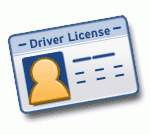A driver’s license is essentially a permit to operate a motorized vehicle within certain limitations as dictated by set classes or categories. These categories usually indicate the expected level of experience of the license holder and therefore specify the parameters by which such license can be used. It is usually obtained after successfully passing written and driving tests.
Specific requirements may vary depending on the country or region where a driver wishes to exercise the prerogatives of driving. Minimum age requirements are put in place to make sure that individuals who may be too young to handle the serious activity of driving are not unnecessarily placing other people’s lives and properties at risk. Proper driving requires a certain degree of maturity with regards to behavior and decision-making.
Requirements pertaining to the level of expertise also seek to address safety issues with regards to corresponding responsibilities such as in operating a public vehicle or a vehicle with heavy loads. Operating these types of vehicles obviously require more experience because of the additional responsibility which the act comes with.
Being a government issued document, a driver’s license is also typically used for identification. Some countries also use the diver’s license to indicate the holder’s willingness to become an organ donor in case of sudden death specifically in vehicular accidents. An International Driving Permit (IDP) will have to accompany an individual’s driver’s license if she/he wishes to be allowed to drive in a foreign country. This permit however, is recognized by select countries only. Those countries which do not honor such permit require foreign drivers to obtain a valid license in the respective countries or obtain a special permit, whichever is applicable.
